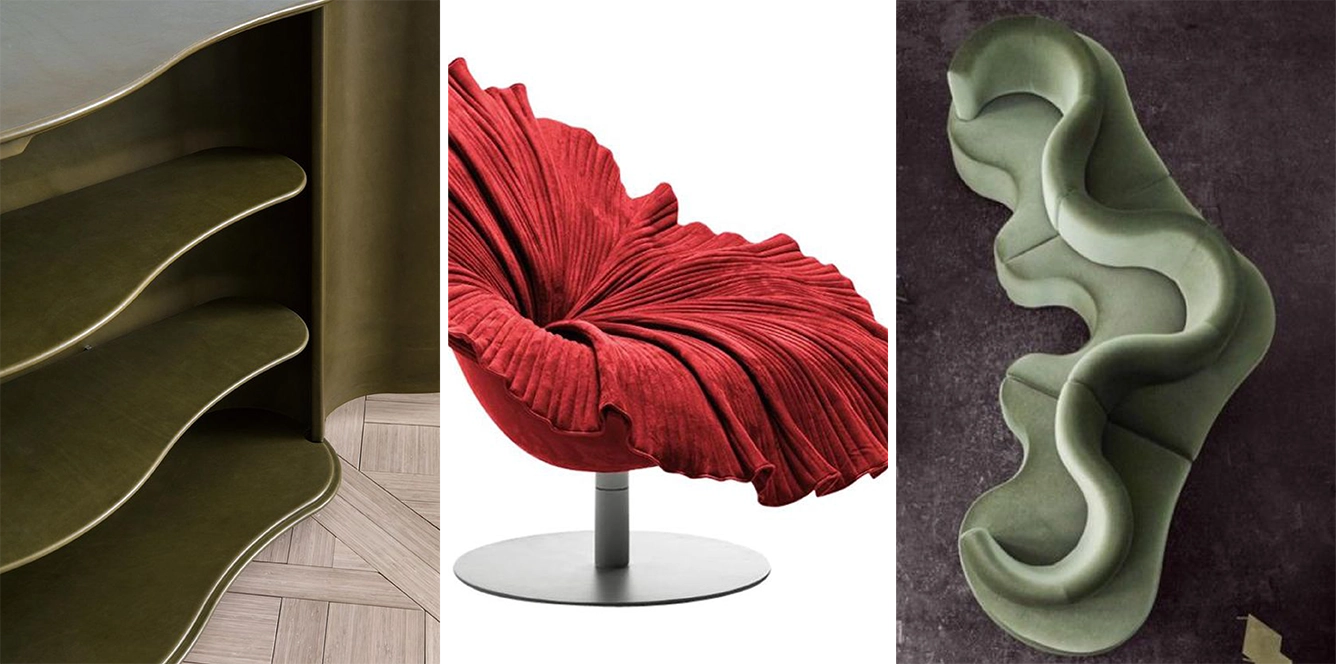
The Rise of Organic Shapes in Casegood Design
The Rise of Organic Shapes in Casegood Design
Casegoods are functional furniture pieces, but in luxury hotels, they often serve as stunning design elements, contributing to a space’s elegance and sophistication. While most people think of casegoods in terms of clean lines and geometric shapes, there is a growing trend to incorporate organic, flowing forms.
Soft, natural shapes provide a subtle connection to the outdoor world, allowing guests to sink into a state of relaxation. Whether a sculptural dresser, curvaceous nightstand, or sinuous credenza, organic casegoods have the power to be both functional and artistically expressive centerpieces in hospitality settings.
Here’s a look at how organic shapes are used in casegoods for hotels and why they are growing in popularity.
Curved Lines and Rounded Edges
Sensuous, flowing contours that effortlessly blend one shape into the next are replacing harsh angles and stark rectangular forms. Examples include soft corners on tables or a kidney-shaped coffee table.
Rounded edges serve both a practical and aesthetic purpose in organic casegoods. From a functional standpoint, they eliminate sharp corners. The smooth, curved transitions are also more comfortable to lean against or rest one’s arms on. Rounded edges create a softer, more naturalistic look that mirrors the shapely slope of a hill or the curl of an ocean wave.
Fluid Silhouettes
One trend in hospitality casegoods is fluid, amorphous silhouettes. These undulating forms and geology-inspired silhouettes exude movement and energy.
Casegoods with fluid silhouettes take on a life-like quality. Their forms suggest growth and evolution, like the sinuous branching patterns found in trees or the merging, eddying currents in a river basin. Because these shapes are unusual in furniture design, they can be eye-catching artistic centerpieces.
Asymmetry
While symmetry is fundamental to traditional furniture design, the organic casegood trend is embracing a more free-flowing, asymmetrical aesthetic. Rather than conforming to strict mirrored patterns, asymmetrical designs allow for innovative, sculpture-like forms.
Examples include an asymmetrical lamp base, a credenza divided into uneven quadrants, or dramatically slanting drawer fronts. Curvaceous pieces frequently incorporate pockets of asymmetry through undulating ridges, hollows, and bumps. Asymmetrical shapes mimic the natural world and engage the mind while fostering an atmosphere of tranquility.
Why Organic Shapes Are on the Rise
The rise of organic shapes in luxury hotel furniture is driven by larger socio-cultural forces and fundamental human needs. People spend their lives online, indoors, and moving through concrete and asphalt jungles. Organic shapes invoke nature, promoting relaxation and supporting mental health.
Nature-Inspired Spaces Offer a Counterpoint to Modern Life
Our fast-paced world creates a yearning for a respite from the chaos and hard edges of contemporary living. Organic shapes and nature-inspired design provide a much-needed contrast and escape from the sterile, overly man-made landscapes that have come to dominate our civilized spaces.
Particularly for travelers staying at luxury hotels, the goal is often to leave behind lives of constant hustle in favor of an oasis of tranquility. Casegoods with soft curves, natural materials, and visual connections to the outdoor world offer a taste of the serenity found in nature.
A Contrast to Minimalism
For years, minimalist design philosophies dominated high-end interior decor with their streamlined aesthetic. Organic shapes represent a more maximalist, ornamental approach. The soft, sculpted forms and visual complexity of organic casegoods are intentionally eye-catching rather than fading into the background, cultivating a sense of richness and comfort through their enveloping, artistic presence.
While minimalism was focused on creating orderly, logical spaces, organic design taps into something more emotional and humanistic. The flowing contours and naturalistic silhouettes create a warm, familiar feeling that resonates in our collective DNA.
Evolution of Old Trends
While organic shapes may seem strikingly novel in today’s design landscape, they actually represent an evolution and reinterpretation of classic design elements that have been around for decades. Iconic mid-century pieces like the Eames Lounge Chair, with its sleek, sculpted wood veneer shell, demonstrated an early exploration of curved, naturalistic forms.
Material Advancements
Designers now have an incredibly diverse array of pliable, high-performance mediums to bring organic visions to life. Wood will always be a key material for casegood construction, but innovations have exponentially expanded its applications. Wood veneers can be molded into virtually any complex, sinuous shape imaginable while retaining the beauty of natural grain patterns.
Composite materials like acrylic, polyurethane, and solid surface composites are extremely malleable when heated, allowing for seamless, sensual shapes. Their uniformity enables designs with flowing transitions free of joints or seams.
The Expertise to Fulfill Any Design Vision
At Mittman, we have the capacity to take on complex and intricate casegood projects of any scale. Whether you envision sensuous, asymmetrical credenzas, fluid wraparound casegoods, or statement bedroom pieces that blur the lines between furniture and sculpture, Mittman’s skilled craftspeople have the experience and expertise to make it a reality.
We invite you to connect with our team and leverage our manufacturing prowess for your next hospitality project.
